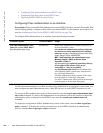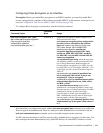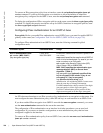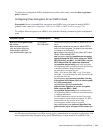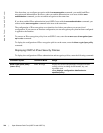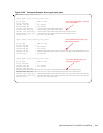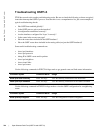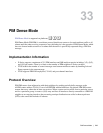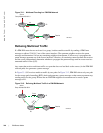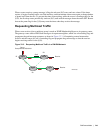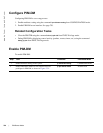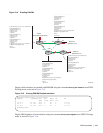
744 | Open Shortest Path First (OSPFv2 and OSPFv3)
www.dell.com | support.dell.com
Troubleshooting OSPFv3
FTOS has several tools to make troubleshooting easier. Be sure to check the following, as these are typical
issues that interrupt the OSPFv3 process. Note that this is not a comprehensive list, just some examples of
typical troubleshooting checks.
• Has OSPF been enabled globally?
• Is the OSPF process active on the interface?
• Are adjacencies established correctly?
• Are the interfaces configured for Layer 3 correctly?
• Is the router in the correct area type?
• Have the routes been included in the OSPF database?
• Have the OSPF routes been included in the routing table (not just the OSPF database)?
Some useful troubleshooting commands are:
• show ipv6 interfaces
• show ipv6 protocols
• debug IPv6 OSPF events and/or packets
• show ipv6 neighbors
• show virtual links
• show ipv6 routes
Use the following commands in EXEC Privilege mode to get general route and links status information.
Use the following command in EXEC Privilege mode to view the OSPF configuration for a neighboring
router:
Command Syntax Command Mode Usage
show ipv6 route summary
EXEC Privilege View the summary information of the IPv6 routes
show ipv6 ospf database EXEC Privilege View the summary information for the OSPFv3 database
Command Syntax Command Mode Usage
show ipv6 ospf neighbor
EXEC Privilege View the configuration of OSPFv3 neighbors.



